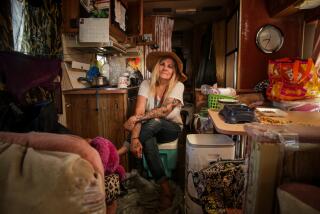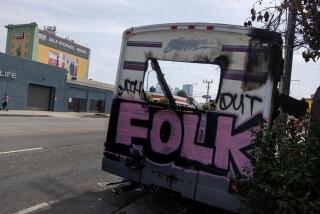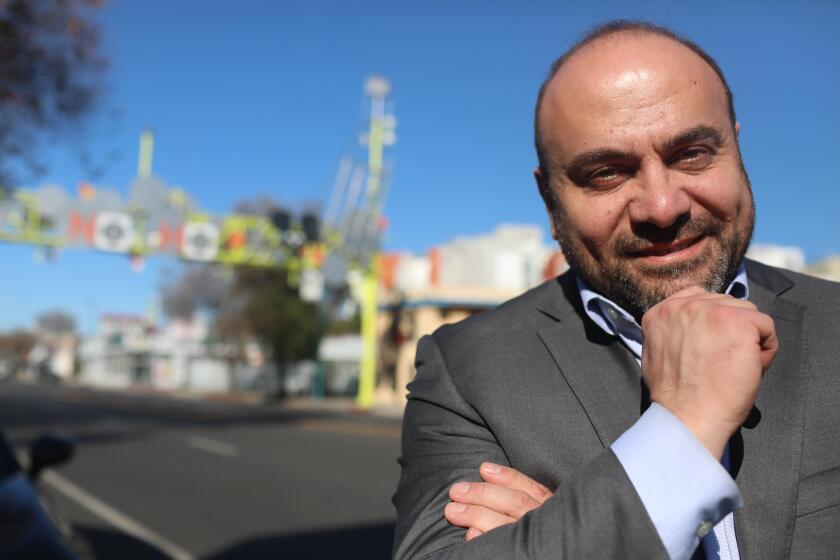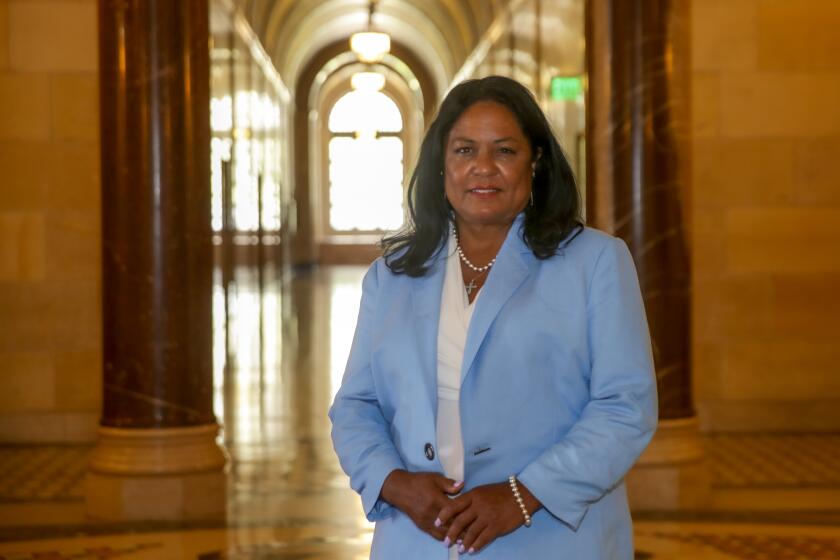Editorial: When a car is a home: City Hall’s new headache
Faced with the decision by the U.S. 9th Circuit Court of Appeals striking down Los Angeles’ ban on homeless people living in their cars, City Atty. Mike Feuer and the City Council now face the obvious question: What next? Feuer already has done the right thing. He’s decided not to appeal the ruling, but rather to recognize that the original ordinance was legally defective because of its vagueness and cruel in its ambition to criminalize poverty and desperation.
Now it’s the council’s turn. It could instruct Feuer to draft a new ordinance that would survive constitutional muster, but that would merely wrap sound legal reasoning around a bad idea. Instead, the council would be better off directing that energy toward working with police and homeless advocates to develop policies that protect those scrambling to stay alive, while also recognizing that neighborhoods have legitimate health and safety concerns about parked cars serving as living spaces.
Often considered among the “hidden homeless,” people living in their cars and RVs, sometimes with children and pets, have just a sliver more stability than the homeless pitching tents on sidewalks or bedding down in shelters — they have their vehicles and whatever security, privacy and convenience (some have jobs) that offers. It’s almost impossible to count their numbers accurately. Venice alone had drawn about 250 car-dwellers several years ago, which led to a police crackdown and the subsequent lawsuit the court ruled on last week.
In the short term, local officials must grapple with how to manage those people who have no place to sleep other than their cars. Herding them into parking lots and allowing them to spend the night could create safety and sanitation issues for surrounding neighborhoods. Overnight parking on residential streets could create similar problems. And yet there are alternatives. In Santa Barbara, a nonprofit called the New Beginnings Counseling Center has established a parking program that works with churches, businesses and other groups willing to host a small number of overnight cars at each of their locations. That’s produced promising results, albeit on a much smaller scale than Los Angeles.
Ultimately, however, this issue cannot be resolved without increasing the region’s supply of affordable housing. The persistence of homelessness in Southern California should remind officials at all levels of the continuing, crucial need for housing stock within reach of people of low and moderate incomes. And this recent ruling should cause those officials to redouble their efforts not to penalize the poor but rather to find suitable locations for such housing, to create sufficient tax and other incentives to stimulate its construction — and to get it built.
More to Read
A cure for the common opinion
Get thought-provoking perspectives with our weekly newsletter.
You may occasionally receive promotional content from the Los Angeles Times.


![Los Angeles, CA - May 19: Carlos Vargas, left, and Paulina Rubio, members of the harm reduction team from Homeless Outreach Program Integrated Care Systems [HOPICS], a leading homeless services and housing agency, look for drug addicts to help and pass out supplies at a homeless RV encampment along 77th St. in South Los Angeles Friday, May 19, 2023. The team hands out syringes, fentanyl test strips, overdose reversal nose spray and medication to prevent overdoses, infection and disease transmission, including the HIV virus. Fenanyl is particularly insidious because it can be found in all other drugs, especially meth and heroin. The handouts are also meant to reduce infection through broken pipes, which can cut users mouths and open them to infection. . (Allen J. Schaben / Los Angeles Times)](https://ca-times.brightspotcdn.com/dims4/default/530e2db/2147483647/strip/true/crop/3900x2608+0+34/resize/320x214!/quality/75/?url=https%3A%2F%2Fcalifornia-times-brightspot.s3.amazonaws.com%2Fe9%2F77%2F4b8bd35d4881a3edec6b945b143b%2F1298639-me-soaring-fentanyl-deaths-24-1-ajs.jpg)







